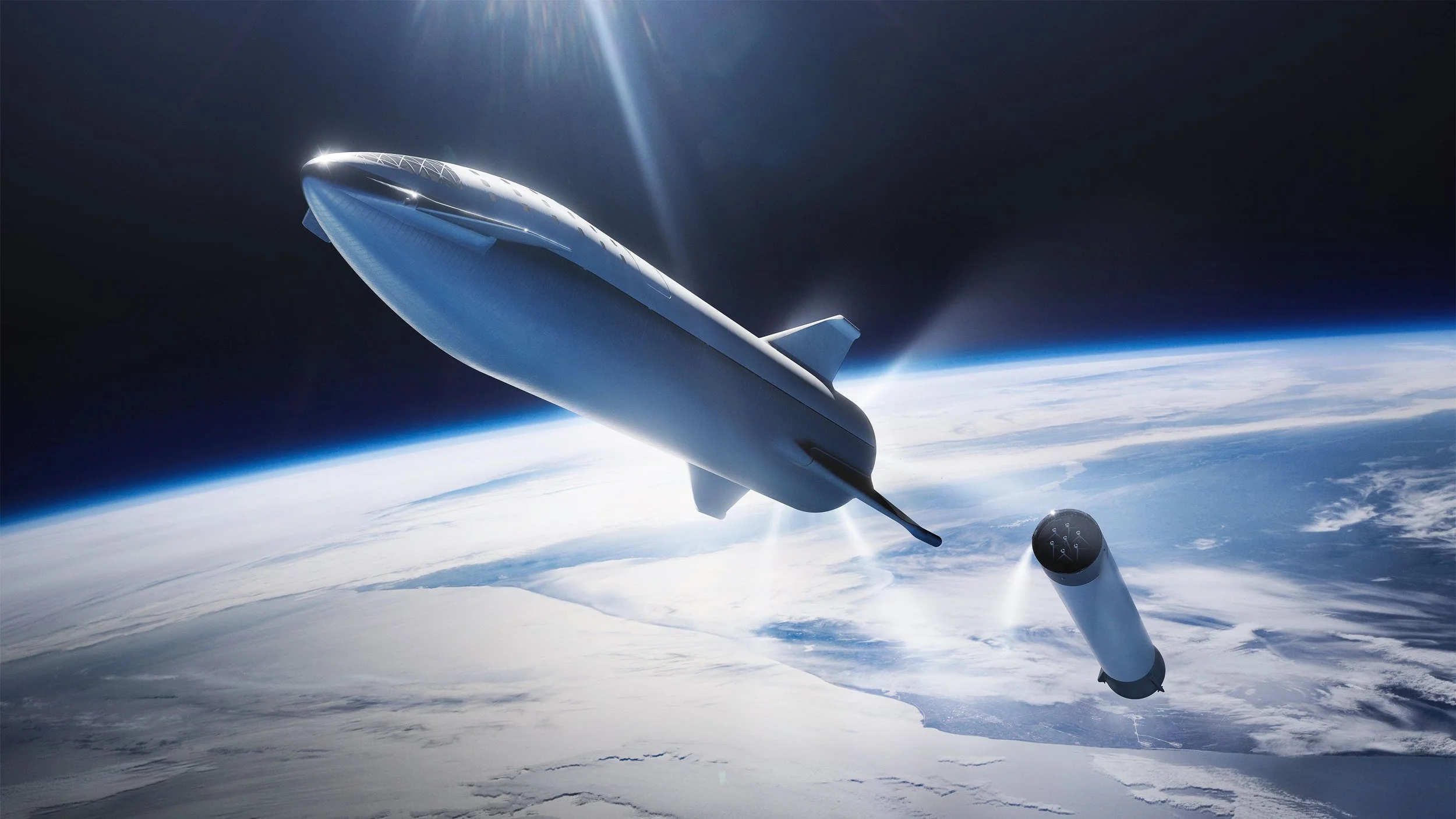If everything goes according to plan, NASA will send humans to Mars within the next ten to twenty years.
Such a mission will take several years, meaning that astronauts will have to live with microgravity for a prolonged period of time, making them susceptible to potential bone mass loss.
Scientists may have found a solution to this issue with help from space-grown transgenic lettuce capable of producing a 'bone-stimulating' hormone. The lettuce may also be useful here on Earth in combating osteoporosis.
On its way to Mars - (Image Credit: SpaceX via flickr / HDR tune by Universal-Sci)
Bone mass loss in space
Loss of bone mass in space (spaceflight osteopenia) commonly occurs during spaceflight. Astronauts tend to lose about 1% of their bone mass for each month in space, meaning that it is an issue that only presents itself during long-duration space flight.
Astronauts aboard the International Space Station need to work out every day to negate the effects of microgravity. Typically occupants stay for about 6 months on the ISS. To put this in perspective, a journey to Mars takes about 10 months.
Currently anticipated missions to Mars would take about 3 years, with the astronauts staying on the red planet for about 1 year. Unfortunately, such a 3-year undertaking may leave astronauts susceptible to osteopenia and, eventually, osteoporosis.
Daily injections to prevent bone loss
One solution to combat bone loss would be a daily injection with a peptide fragment of human parathyroid hormone (PTH). PTH promotes bone formation and helps restore bone mass in low gravity environments.
The problem with this solution is that transporting large amounts of medicine (and corresponding syringes) would be severely impractical and cost a fortune.
To find a solution, a team of researchers at UC Davis Chemical Engineering looked for a way for astronauts to produce the medicine themselves in space.
The team found their answer in the aforementioned space-grown transgenic lettuce. On top of the benefits in preventing bone loss, lettuce will provide a welcome variety to the canned and freeze-dried foods associated with spaceflight.
According to Dr. Somen Nandi (one of the researchers), a few thousand transgenic seeds will fit in a vial the size of your thumb. This means that they are very suitable for taking on a journey to the red planet.
Image Credit: joshimerbin via Shutterstock
After growing the plants, the astronauts will be able to synthesize the necessary pharmaceuticals and then eat the plants.
Growing plants during space travel
Growing plants in space is not something new. Astronauts aboard the International Space Station have been doing it for years for both aesthetic and practical reasons.
ISS occupants recreated a little piece of Earth within the space station by developing flowers and vegetable gardens as research shows that flowers and plants enhance psychological well-being.
In addition, space-grown plants can provide a much-needed vitamin C boost to the diet of astronauts. Simply taking some multi-vitamins will not be enough to keep astronauts healthy during space exploration. They will also require fresh produce.
Left: The Crop Food Production Research Area of the Space Station Processing Facility at the agency's Kennedy Space Center in Florida. - Right: Crops grown in the Advanced Plant Habitat on the ISS - (Image Credit: NASA/Cory Huston)
Developing a very helpful type of lettuce
The research team aimed to develop transgenetic lettuce that expressed the PTH peptide in a state that can be used orally as opposed to daily injections. The resulting lettuce may also aid in treating osteopenia in resource-limited locations here on Earth.
In order to enhance PTH's bioavailability and stability in the body, the team connected a part of another protein to its sequence. They chose the fragment crystallizable (Fc) domain of a human antibody as past research has demonstrated that Fc fragment prologues the time in which the attached peptide circulates in the blood, causing it to be more efficacious.
The team presented a gene encoding PTH-Fc to lettuce by contaminating plant cells with a particular species of bacteria (Agrobacterium tumefaciens) commonly used in the lab to transfer genes to plants. They then checked the transgenic lettuce plants for PTH-Fc production.
Early results demonstrate that, on average, the plants express about 10-12 mg of the altered peptide hormone per kg of lettuce. With these numbers, astronauts would need to consume about 380 grams of lettuce a day to receive an adequate amount of the needed hormone, assuming approximately 10% bioavailability.
The team is currently trying to further improve their lettuce, aiming for a more concentrated expression of the desired hormone. The next step would be testing how well it grows in the ISS and checking if it produces the same amount PTH-Fc as on Earth.
Even though the scientists haven't tasted the lettuce themselves (its safety hasn't been established as of yet), they expect that it will taste very comparable to conventional lettuce, akin to most other transgenic plants.
Although further testing is needed, Kevin Yates (one of the researchers) stated that he would be very surprised that ''if, by the time we send astronauts to Mars, plants aren't being used to produce pharmaceuticals and other beneficial compounds.''
The science team working on this concept presented their research during a meeting of the American Chemical Society.
Sources and further reading:
If you enjoy our selection of content consider subscribing to our newsletter (Universal-Sci Weekly)
FEATURED ARTICLES:










